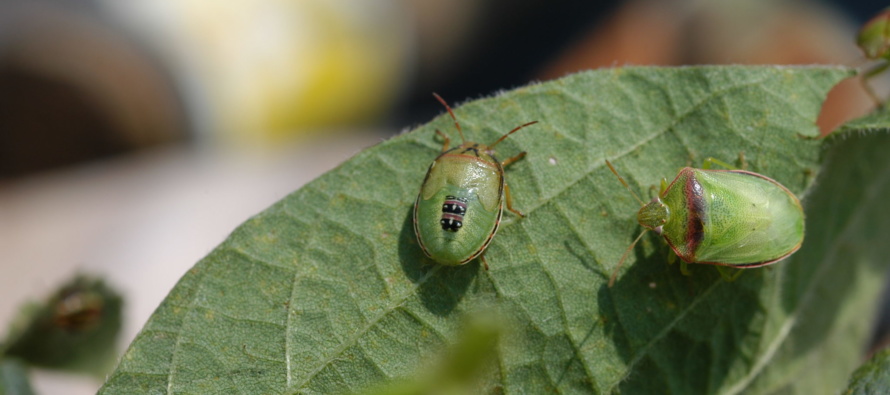Redbanded Stink Bug Management and Inclement Weather

Related Articles
- Calcium and Magnesium For Mississippi Crops 1
- March 11 Precision Agriculture Workshop 0
- Ground Speed Affects Spray Droplet Deposition 0
Latest Tweets
Redbanded stink bug (RBSB) has been increasing across the South Delta and many fields have received multiple insecticide applications. Control options for RBSB are relatively limited. Management is typically reliant on acephate plus bifenthrin or one of these actives tank mixed with other products. When weather conditions such as persistent rain events are prevalent, acephate is not an effective option. A minimum of eight hours is need for rainfastness with acephate, but the longer the better. That leaves Endigo ZC (4.5 oz.) or Belay (4 oz.)/Imidacloprid 4lb (1.5 oz.) plus bifenthrin (6.4 oz.). Based on previous research, all three options provide good control of RBSB. However the chances of rapid re-infestation are more likely later in the season.
Insecticide termination timing for RBSB is R7 unless there are adverse environmental conditions that would promote poor seed quality. If the weather that we are currently experiencing continues, we may need to consider treatment later than R7. RBSB control will be more critical during periods of increased moisture, causing more damage than under normal environmental conditions. The chances of secondary impacts of feeding are increased during rainy periods. Damage from these insects plus high moisture, increase the potential for seed rot.
Remember that the threshold for the Green, Southern Green, and Brown stink bugs is 9 per 25 sweeps until R6. From R6 to R6.5, the threshold is 20 per 25 sweeps. For RBSB, the threshold is 4 per 25 sweeps until R6.5, and then 10 per 25 sweeps from R6.5 to R7. If you have a mixed population that includes RBSB up until R6.5, use the threshold for the other stink bugs (9/25 or 20/25, depending on the stage) and count a RBSB as 2.25. In the window from R6.5 to R7, you’ll count RBSB using the 10 per 25 sweeps threshold.
Other factors to consider when making insecticide applications close to soybean maturity are preharvest intervals (PHI) and tank mix compatibility of insecticides with desiccants. All of the other insecticides for RBSB management have PHI’s that are 7 to 14 days longer than that for acephate. For the recommended insecticides, the PHI’s are as follows: Endigo, 30 days; Belay, 21 days; Imidacloprid, 21 days. There are several desiccants labeled for use in soybean including Gramoxone, Aim 2EC, sodium chlorate, and Sharpen. Mixing insecticides with any of the suggested desiccants is not prohibited, except with the use of sodium chlorate. Sodium chlorate poses the potential risk of fire or explosion when mixed with organophosphate insecticides. There would be no concerns when mixing sodium chlorate with pyrethroid or neonicotinoid insecticides.
As RBSB populations continue to build, later planted beans will continue to be at risk. In combination with a rainy environment, alternative control methods will be needed to management populations. Control later than R7 may also be warranted in isolated situations. If you have any questions about RBSB management, feel free to reach out.





We sold our farm in Utica; however, while we ran it, we grew tomatoes for sale. We found that this stink bug preferred a high acid tomato, so we planted small acid cherry tomatoes for them. They liked red Brandywine, too. So we used trap cropping. These stink bugs stayed on the more acid tomatoes and left our Pink Brandywine, Cherokee Purple, and yellow tomatoes alone.